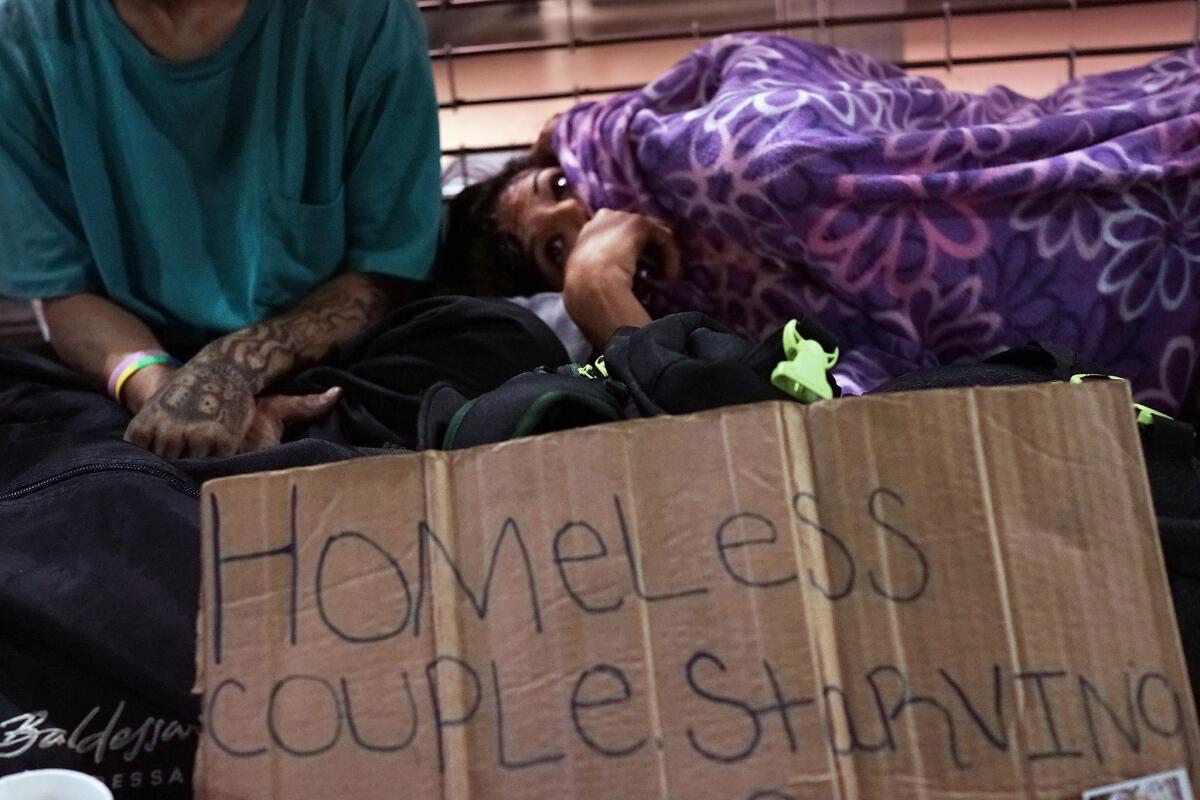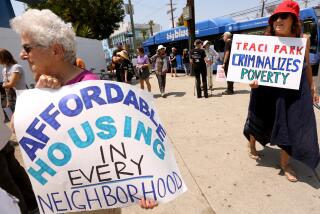Heritage Foundation: America’s poor actually live pretty durn well!

The Heritage Foundation has weighed in with its contribution to the enduring conservative effort to paint America’s poor as undeserving mooks.
The right-wing think tank’s offer is a paper titled “The War on Poverty After 50 Years,” by senior research analyst Robert Rector and policy analyst Rachel Sheffield. Rector contributed a companion article to the Daily Signal, which is Heritage’s (stop me if you’ve heard this one) “straight” news site. That article comes complete with a snazzy graphic, which you can see below. The items were published to coincide with the Census Bureau’s release of poverty statistics this month, which we discussed here.
To some extent, there’s nothing new in the latest Heritage analysis; it tracks a 2011 study by Rector and Sheffield on the same theme, with some figures updated. Now, as then, their purpose is to demonstrate that America’s poor live pretty durn well. The implication is: Stop your bellyaching. More important, their goal is to undermine support for government anti-poverty programs by implying that they’re either ineffective or unnecessary.
Not unexpectedly, however, the Heritage analysts demonstrate a fundamental lack of understanding of what it means to be poor, and who the poor are.
They also deliver some of their statistics with a thick, candy-colored shell. Let’s take a look.
Here’s the essence of the Heritage case (the bullet points are theirs):
- Eighty percent of poor households have air conditioning. By contrast, at the beginning of the War on Poverty, only about 12 percent of the entire U.S. population enjoyed air conditioning.
- Nearly three-quarters have a car or truck; 31 percent have two or more cars or trucks.
- Nearly two-thirds have cable or satellite television.
- Two-thirds have at least one DVD player, and a quarter have two or more.
- Half have a personal computer; one in seven has two or more computers.
- More than half of poor families with children have a video game system such as an Xbox or PlayStation.
- Forty-three percent have Internet access.
- Forty percent have a wide-screen plasma or LCD TV.
- A quarter have a digital video recorder system such as a TIVO.
- Ninety-two percent of poor households have a microwave.
Mercifully, Rector and Sheffield dropped their observation, last made in 2011, that the median poor household had a refrigerator, as though it would be a hallmark of real poverty to have to bury perishables in a hole in the yard.
They do acknowledge that the availability of these amenities is the result of a sharp reduction in their price, as the technologies mature. For decades, the living conditions of the poor have steadily improved. “This is a general sign of desirable economic progress,” they say.
But there are a few aspects of these figures that Heritage avoids examining too closely. One is: What’s the condition of these appliances? What’s “air conditioning,” for example? Central air -- that might be a sign of relative affluence. A single low-capacity window unit? In much of the nation that might be a minimal accommodation to the climate. How old are our poor families’ cars? Are they luxuries, or indispensable for the breadwinners’ employment?
As for those computers, of which half of poor households have one, and 14% have two or more: Notice that only 43% have Internet access. Heritage doesn’t even say that this is broadband access; for many families dial-up is still the option. What good is a computer today without broadband access? You try living without it and see how it affects your life.
Among the flaws in this analysis, last pointed out by the Center for American Progress in 2011, is that all these appliances and devices put together don’t represent usable family resources. A family could sell its used microwave for maybe $45, for example, and buy three days of food for a family of four. (And then it wouldn’t have a microwave to assist in food preparation.)
Most important, Heritage treats American poverty as a steady-state condition. This allows it to measure permanent poverty against statistics indicating that even poor families have better than basic amenities.
But the recent Census Bureau report painted a different picture. Chronic poverty is relatively rare -- only about 3.5% of the population was living in poverty throughout the entire 36-month span from 2009 through 2011, the bureau found. But 31.6% had “at least one spell of poverty lasting 2 or more months.” That implies a population struggling to get ahead, and being regularly knocked down by economic circumstance, such as a dearth of jobs or the arrival of unexpected and devastating expenses.
It also implies that many of the amenities listed by Heritage may be artifacts of those periods of relative non-poverty. A family might buy a computer when the parents are working and can afford it; they’re not likely to discard it when Mom or Dad is laid off.
What about food? Heritage reports:
- Ninety-six percent of poor parents stated that their children were never hungry at any time during the year because they could not afford food.
- Some 83 percent of poor families reported that they had enough food to eat.
- Some 82 percent of poor adults reported that they were never hungry at any time in the prior year due to lack of money to buy food.
Leave aside that one might look at these figures and say: “You mean 18% of poor adults were without money to buy food at some point in the prior year?” And be appalled. More to the point, one reason that poverty no longer equals starvation in America is the food stamp program, against which Heritage has campaigned relentlessly. In other words, a program Heritage wants to cut is what gives it the ability to argue that poor Americans don’t have things so bad.
Heritage’s most insidious technique is to play off its own audience’s conception of real poverty as something akin to a medieval condition, and imply that because America’s poor don’t live in filth, they’re OK. Thus:
- Over the course of a year, only 4 percent of poor persons become temporarily homeless.
- Only 9.5 percent of the poor live in mobile homes or trailers; 49.5 percent live in separate single-family houses or townhouses, and 40 percent live in apartments.
- Forty-two percent of all poor households actually own their own homes. The average home owned by persons classified as poor by the Census Bureau is a three-bedroom house with one-and-a-half baths, a garage, and a porch or patio.
However, “TV newscasts about poverty in America generally depict the poor as homeless or as residing in dilapidated living conditions. While some families do experience such severe conditions, they are far from typical of the population defined as poor by the Census Bureau.”
This is putting the Heritage thumb on the scale. In our experience, TV newscasts about the homeless poor depict them as “homeless.” Most coverage of American poverty, except perhaps on TV networks that take Heritage’s viewpoint as gospel, deliver a rather more nuanced view than that.
To the Heritage Foundation, however, nuance is a luxury its analysts can’t afford.
Keep up to date with the Economy Hub by following @hiltzikm on Twitter.
More to Read
Inside the business of entertainment
The Wide Shot brings you news, analysis and insights on everything from streaming wars to production — and what it all means for the future.
You may occasionally receive promotional content from the Los Angeles Times.











